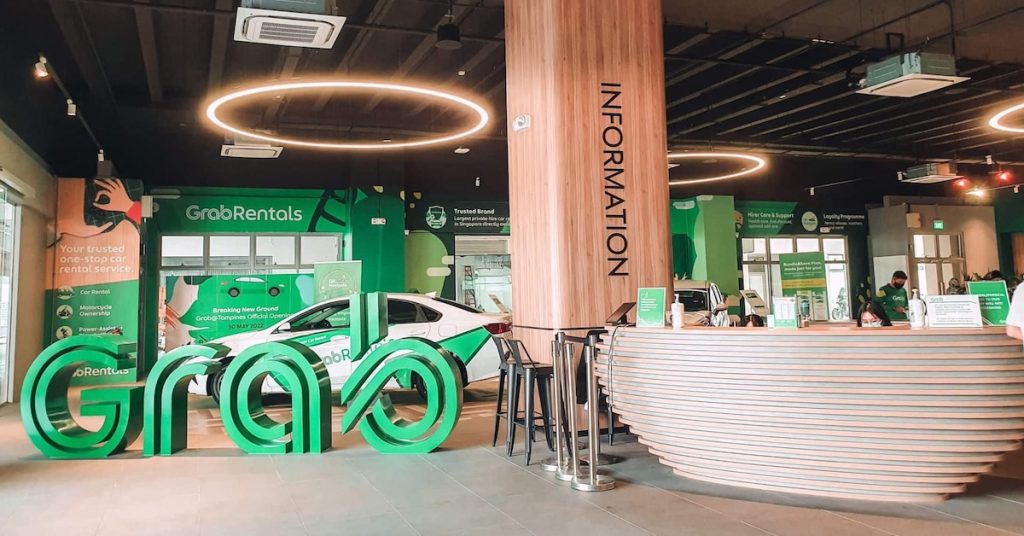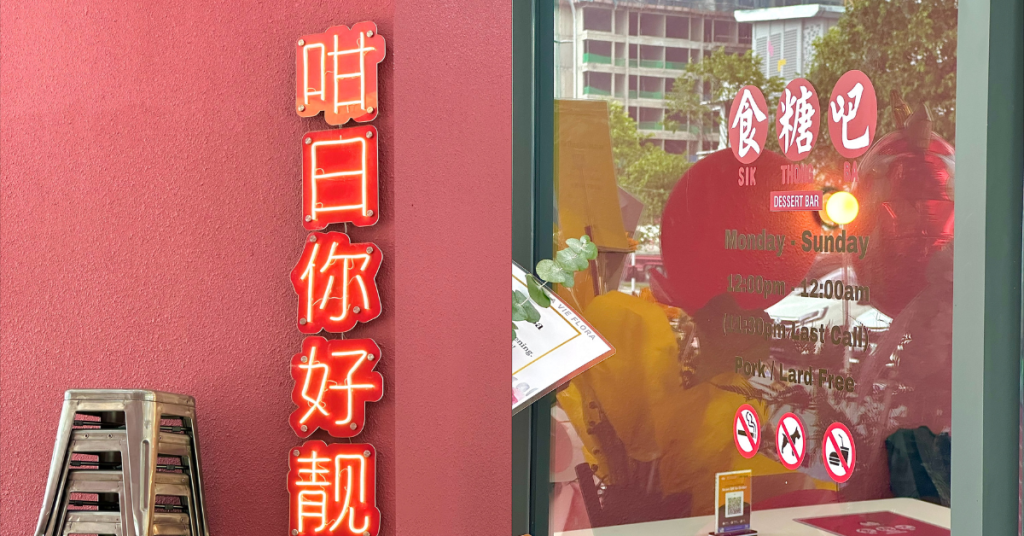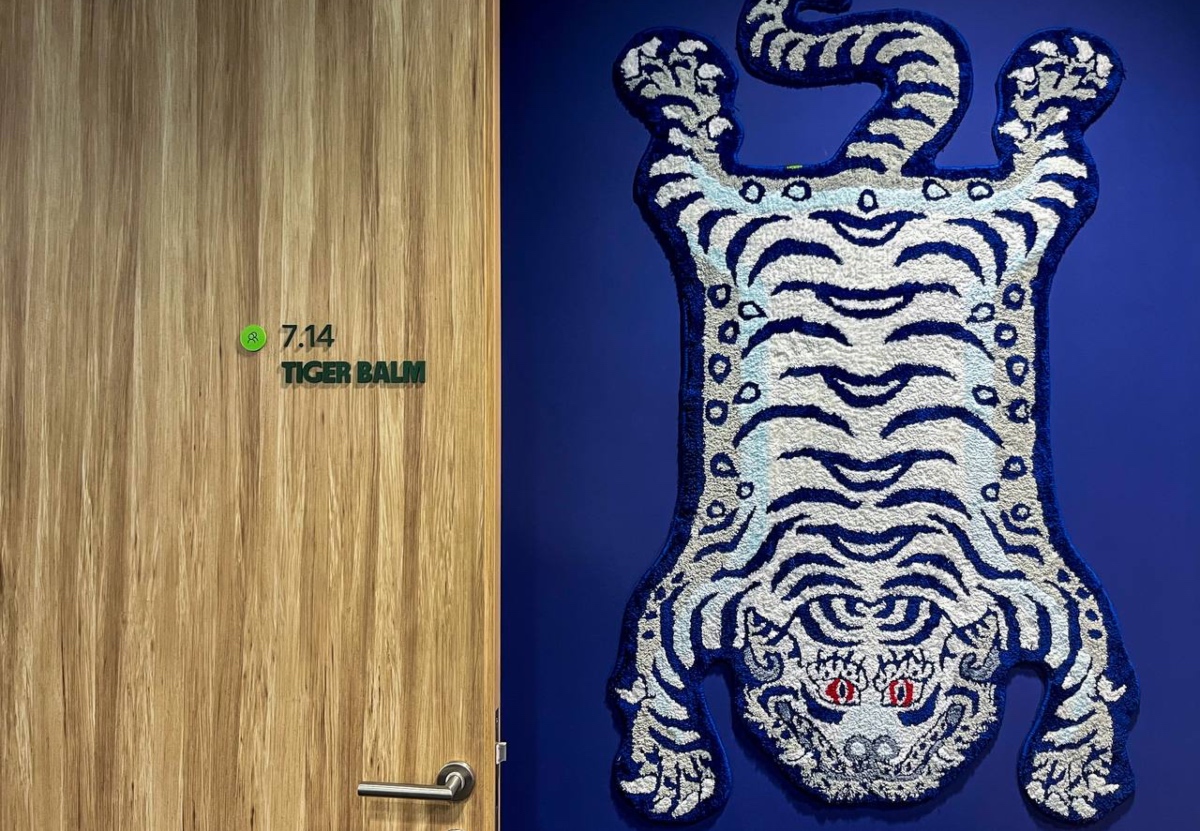Wise was named one of the best APAC employers for 2025—their new S’pore office showed us why

Fintech firm Wise has expanded its Asia Pacific hub in Singapore with the opening of a new office at Paya Lebar Quarter.
The newly unveiled 31,800 sqft office is 25% larger than its previous location, making it Wise’s largest office in Singapore to date.
Yesterday, the Vulcan Post team had the opportunity to tour their new headquarters, and needless to say, we were thoroughly impressed. Here’s a look at the space:
Where the hustle happens

Located on the seventh floor of PLQ 3, Wise houses almost 600 staff at its Singapore office.
The fintech firm’s office design draws inspiration from Asia Pacific’s cultural heritage and is divided into five distinct zones—each representing one of the five feng shui elements: metal, earth, water, wind and wood.


Adding to its functionality, the new space boasts 40% more meeting rooms than Wise’s previous workspace, and each is uniquely inspired by Asian folklore.
During our visit, we spotted several creatively named rooms—some were clever, while others were downright punny. Here are a few highlights:
Throughout the office, local artistry is also on display—pieces by Samuel Xun, Andy Yang, Ezzam Rahman, and Bridget Tay, among other artists, add character to the space.

And now comes the best part.
To support employee well-being and productivity, Wise has thoughtfully incorporated a dedicated wellness space into their new office, ensuring that rest and relaxation are just a few steps away.


In addition to the massage pods and nap rooms, Wise also offers parent rooms and multi-faith rooms, ensuring the office can accommodate all employees’ needs.
-//-
This year, Wise was named as one of the best employers in the Asia Pacific region by the Financial Times for fostering an “inclusive and positive work environment.”
And after touring their office, it’s easy to see why they earned that recognition.
After all, having a workspace designed for both productivity and well-being makes a world of difference for employees.
- If you’re looking to join Wise, they’re now hiring for 16 roles in Singapore. You can check them out here.
- Read other articles we’ve written on tech giants here.
Also Read: “This space marks a coming-of-age”: Carousell unveils new regional HQ at one-north in S’pore
Featured Image Credit: Wise
Grab receives street-hail service license, to become Singapore’s 6th taxi operator

Singapore will have a total of six taxi operators now, as GrabCab, a subsidiary of Grab Rentals and the sister company of GrabCar, has just received a licence to run street-hail services in Singapore today (April 2, 2025).
According to a press release by the Land Transport Authority (LTA), GrabCab’s entry will provide drivers and commuters with more choices and is expected to boost taxi supply. The other current taxi operators are CityCab, CDG, Prime, Strides and Trans-cab.
The company will be given a three-year grace period to progressively expand its fleet to meet the minimum requirement of 800 taxis.
The new license will commence on April 9, 2025 and is valid for 10 years.
As part of the licensing conditions, LTA stated that GrabCar’s street-hail services must follow the same taxi fare structure components as other street-hail operators, and its fare must be prominently displayed so that passengers are informed of the applicable fare rates.
In a media statement, Grab said that it will launch a green fleet in the coming months, featuring low- and zero-emission hybrid and electric vehicles.
The company will also sponsor the course fees for a Taxi Driver’s Vocational Licence, as well as six-month National Taxi Association membership fees for new members planning to join GrabCab. Drivers can register their interest from today.
Grab is grateful to the Land Transport Authority for granting us a taxi licence, which provides us the opportunity to introduce GrabCab, a taxi fleet to complement private hire cars on our platform.
This enables us to address unmet consumer demand and improve ride availability, particularly during peak hours, late nights and in areas only accessible by taxis. It also positions us to better serve the anticipated growth in point-to-point rides in the coming years, while catering to consumers who prefer street-hailing.
A Grab spokesperson in a media statement to Vulcan Post
Grab has yet to disclose when GrabCab will be launched and how many vehicles it will initially operate.
- Read more articles we’ve written on Singaporean businesses here.
Also Read: Grab & GoTo are allegedly eyeing a 2025 merger, but GoTo denies reports
Featured Image Credit: GrabRental
A beginner-friendly guide to investing: How to start growing your wealth in M’sia

Disclaimer: This article is for educational and informational purposes only. It is not intended to be a substitute for financial advice. Readers are encouraged to do their own research before arriving at any conclusions based solely on this content. Vulcan Post disclaims any reward or responsibility for any gains or losses arising from the direct and indirect use and application of any contents of the written material.
Ah, investing. Personally, when the topic comes up I tend to leave the conversation to just talk to the girlies about the latest Lana Del Rey album, or the next Severance episode.
But since I’ve started my days of spending my own money on, well, everything, the idea of “free” money seems more and more appealing. But with all the confusing technical jargon and financial terms on even introductory articles, I keep getting scared back to just doomscrolling on Twitter.
Well, if this sounds like your case too, fret not, for I have scoured the interwebs, watched podcasts by crypto bros, and talked to finance bros to put together an actually beginner-friendly guide to investing so that someday, you could dip your toes into these waters.
In·vest
/ɪnˈvɛst/ verb
Put (money) into financial schemes, shares, property, or a commercial venture with the expectation of achieving a profit.
In simpler terms, investing is the act of using your money for the purpose of getting more money in the future, instead of just letting it sit around in your bank account or as cash.
It’s important to note that investing is highly personal, heavily depending on various variables in one’s life, such as financial position, earning power, life circumstances like commitments and dependants, personal goals and even emotional readiness.
All of this forms the foundation of your investment strategy. As such, it’s highly recommended to perform your own research or consulting, whether with experienced friends or even experts, to gauge which execution works best for you.
But why?
“Is investing really worth all this though? What if I already have a stable career?” you might be asking.
The fact of the matter is, investing isn’t just something bored finance bros do so they can spend more time being bored; rather, it’s a necessary practice to maintain the value of your savings so you can secure a stable future.
This is due to the concept of time value of money (TVM). It surmises that money is worth more now than at a future date based on its earning potential. Because money can grow when invested, any delay is a lost opportunity for growth.
As such, money that is not invested or earning interest not only loses its potential of gaining value, but would also depreciate due to inflation.
Essentially, investment is a necessary step of ensuring that your savings don’t turn into peanuts over the years.
A look in the mirror
Firstly, it’s important to evaluate yourself and your risk tolerance.
That means establishing your capacity of dealing with an unfavourable outcome or return from an investment.
Most investments with a higher risk come with a higher chance of rewards. From this, you should keep in mind the amount of money you can afford to lose before going forward with a risky investment.
That said, there are several low-risk investments you can still go through with. From fixed interest rates in savings accounts to the Employee’s Provident Fund (EPF), there exist several ways to keep your money’s value from naturally depreciating without risking losing it all.
For those with a little more tolerance to risk, however, high-risk investments into assets like cryptocurrency, startup stocks, and commodities are available, giving the chance for adventurous investors to earn higher returns.
Once you’ve established your risk tolerance, let’s set some goals and expectations. How much are you hoping to earn? What is your timescale? How much time and effort can you regularly put into managing your investments?
All these need to be considered when building your investment portfolio, a collection of financial investments like stocks, bonds, commodities, cash, and cash equivalents, including closed-end funds and exchange-traded funds (ETFs).
“So, I have to make multiple investments now?”
Well, the key to having a successful investment plan is diversification. It involves investing capital into various financial instruments, industries, and other categories to reduce risk and maximise returns. In other words, it’s a way of keeping your eggs in multiple baskets.
The sample portfolio allocation pictured above is for an investor with a low tolerance for risk. In general, a conservative strategy tries to protect a portfolio’s value by investing in lower-risk securities.
We cover what these investment types mean and how they work below, but in a nutshell, this portfolio gives investors near-guaranteed returns, and lower risks, while addressing the average person’s liquidity needs.
That said, there might be variances to your needs, so it’s recommended that you fully understand your needs, goals, and capabilities before deciding on a portfolio.
So we begin
Now that you’ve decided on your goals and risk tolerance, let’s look at some beginner-friendly investment vehicles.
If you’ve held a full-time position before, you’re probably already familiar with EPF. In short, EPF is a savings and retirement plan for private sector workers in Malaysia. It is a statutory contribution here, meaning employers are required to match their employees’ regular contributions.
Like most retirement schemes, however, a total withdrawal can only be made at ages 50, 55, and 60. Partial withdrawals can be made before that, but only from your Akaun Fleksibel.
Returns: 6.30% dividend rate (2024)
Who’s it for: Everyone! Voluntary contributions can also be made for those self-employed.
Again, another form of investment most are familiar with. Savings accounts that offer a Fixed Deposit (FD) guarantee a high return over the long term.
Unlike a conventional savings account that earns daily interest and allows for withdrawals at any time, an FD restricts access to money you have invested.
Below are some comparisons between major banks and their primary FD rates. Note that these rates are subject to change and most banks also offer different rates if you fit a certain criteria.
| Bank | Interest Rate (% per annum) | Early Withdrawal? |
|---|---|---|
| Alliance Bank | 2.75 | No |
| BSN | 2.7 | No |
| Standard Chartered | 2.65 | No |
| UOB | 2.6 | No |
| OCBC | 2.6 | Yes |
| Public Bank | 2.5 | No |
| Maybank | 2.5 | Yes |
| RHB | 2.5 | Yes |
| HSBC | 2.5 | Yes |
| CIMB | 2.5 | Yes |
| AmBank | 2.45 | No |
| Hong Leong | 2.3 | Yes |
| Affin Bank | 2.3 | Yes |
Returns: 2-3% per annum
Who’s it for: Long-term investors and those with minimal risk tolerance.
- Unit Trust Funds (ASB/ASM)
Unit trusts are defined as a collective investment instrument, in which investors’ capitals are pooled together into a single fund to be managed by a professional fund manager. The accumulated fund is then invested into various equity portfolios, fixed-income securities, and other assets. The funds may be invested in various types of businesses and companies based locally and abroad.
One of the most accessible unit trusts is Amanah Saham Nasional Berhad (ASNB), which offers Amanah Saham Bumiputera (ASB) and Amanah Saham Malaysia (ASM) to bumiputera and all Malaysians respectively.
The unit price of the ASB fund is RM1, with any cost or redemption fee of these units being covered by ASNB. Capital investment into either of these funds is guaranteed by the Malaysian government, making it a low-risk investment.
Returns: 5.75 cents per unit for ASB; 2.16 cents per unit for ASM with a 2.92% income yield
Who’s it for: Long-term investors with minimal risk tolerance and low capital. Also great for those with less time to manage their investments.
When a large company or government requires a large sum of money, one of the easiest ways to fulfill this fund is by taking up a loan. Often, however, the funds they need usually outscale the amount that banks can offer. So the best way for them to gather their funds is by issuing bonds to the public.
Investors will then lend these companies money by purchasing the issued bonds, and after a certain period, the company will pay back the amount borrowed. While waiting for the end of that period, the company will regularly pay you interest at a predetermined interest rate also referred to as a coupon.
Some of the corporate bonds (in the form of loan stocks) in Malaysia are listed on Bursa Malaysia.
However, most of these instruments are issued on a private placement basis and are traded over the counter. As these bonds are issued without a prospectus, the instruments could only be issued or offered to a restricted list of investors as specified under the Capital Markets and Services Act 2007 (CMSA).
Take note that when an investor buys a bond, they become a creditor of the issuer. However, the buyer does not gain any kind of ownership rights to the issuer, unlike equity investments.
Returns: 3.80% for Malaysian government bonds; 4-5% for corporate bonds
Who’s it for: Short-mid-term investors able to afford a higher capital and with a low to moderate risk tolerance.
A money market fund is a kind of mutual fund that invests in highly liquid, short-term instruments including cash, cash equivalent securities, and high-credit-rating, debt-based securities with a short-term maturity.
Money market funds are intended to offer investors high liquidity with a very low level of risk. Returns are dependent on the applicable market interest rates, and therefore, the overall returns from the money market funds are also dependent on interest rates.
Returns: Variable
Who’s it for: Short-term investors with a low-risk tolerance and higher capital.
- Stocks
Now, let’s talk stocks. Also known as equity, stocks are a security that represents the ownership of a fraction of the issuing corporation. Units of stock are called shares, which entitle the owner to a proportion of the corporation’s assets and profits equal to how much stock they own.
Stocks are bought and sold predominantly on stock exchanges and are the foundation of many individual investors’ portfolios. Stock trades have to conform to government regulations meant to protect investors from fraudulent practices.
There are various types of stocks, but the two that beginners might want to focus on are blue-chip stocks and Exchange Traded Funds (ETFs).
Blue-chip stocks are shares of large, well-established, and financially sound companies with a history of reliable performance. ETFs, on the other hand, are traded like stocks. They track market indexes like the S&P 500, and offer instant diversification, reducing the risk associated with individual stocks.
Returns: Highly variable, with limitless highs and lows
Who’s it for: Anyone (with time)! Blue-chip stocks offer lower risks while ETFs offer easy diversification. That said, there is a steep learning curve when it comes to picking the right stock to purchase.
A step further
Now that you know more about the opportunities available to you, there are several other investment vehicles that you could look into if you plan on further diversifying your investment portfolio. These include:
- Commodities, such as gold and silver;
- Property, be it via Real Estate Investment Trusts (REITs) or residential investments;
- Cryptocurrency, such as Bitcoin and Ethereum;
- FOREX, or the trading of fluctuating currencies; and
- Venture capital, a highly risky form of buying stocks from startups and small businesses.
But how?
Once you’re familiar with the various investment vehicles, you might be asking, “How do I get started?”
Again, this comes down to personal preference and the time and energy you’re willing to spend on getting this “art” right.
If you’re particular about where your money goes and are keen on actively learning through practice, self-directed investing could be the way to go.
This involves conducting your own research on current return rates, liaising directly with banks or companies, and evaluating the risks and potentials of various investments.
If you’re interested in going down this route, I would recommend browsing through educational websites like Investopedia and RinggitPlus; looking through introductory videos by YouTubers like Ziet Invests; and even taking some courses on investing through sites like LinkedIn and Coursera.
But, if you’re looking to take the easier route, seeking out professional wealth managers could ease the process greatly, and like investments, picking the right manager with the appropriate expertise could lead to higher and faster profits.
A new option that might be more feasible for millennials and Gen Zs, however, is robo-advisors. Powered by AI and algorithms, robo-advisors gather critical information about the investor and their risk profile to make suitable recommendations.
With little to no human interference, robo-advisors offer a cost-effective way of investing with services similar to what a human investment advisor provides.
Popular Malaysian robo-advisors include AkruNow, StashAway, and Kenanga Digital Investing (KDI).
The bottom line
If you’ve successfully made it to the end, congratulations! You probably have more questions now, but at least you know that you have the interest and drive to learn more about the complex, ever-evolving, and tumultuous world of investing.
Investing is a process that provides continuous learning, and although it may be demotivating to constantly have to learn and unlearn various aspects of this sphere, know that it is definitely a worthwhile effort in keeping your finances in check and ready for whatever comes.
Also Read: This HP smart printer proves that M’sian SMEs don’t have to break the bank for reliability
This M’sian chef went from running a tong sui stall to owning a dessert chain with 4 outlets

There’s a bunch of modern desserts available nowadays, from icy bingsu to creamy gelato.
But to me, nothing hits the same as good old tong sui. Perfectly light and refreshing, it makes for a delectable treat after a heavy meal.
Of course, I’m not the only one who enjoys a good bowl of tong sui. That’s why there are so many brands on the market offering them now.
One such brand that I’ve personally frequented is Sik Thong Ba. With four outlets across the Klang Valley, Sik Thong Ba has become a neighbourhood favourite wherever it ends up, with thousands of fond Google reviews for every single outlet.
Using Chinese desserts as a medium
Like many, the founder Karen’s first business was in a coffee shop. But she wasn’t selling coffee.
Having always been interested in baking and desserts, she decided to study culinary arts in college. Upon graduation, she honed in on her love for Chinese desserts and opened a small stall for her desserts in a coffee shop.

Karen worked on this stall for a year, and found that she really enjoyed doing it. With the dream of improving her business, she launched her own brick-and-mortar store specialising in tong sui.
This concept might not sound novel now, but at that point in 2019, Karen felt like there weren’t many modern Chinese dessert offerings on the market.
From my own memory, it’s true that many tong sui offerings back then were old-school stalls or more traditional shops. Modern cafe-style tong sui spots were quite the rarity still.
“I remember that I really used up all my savings when I opened the first store in Cheras Traders Square,” Karen reminisced about her first shop.
Today, that first outlet is still standing strong, with a whopping 4.8 stars on Google, amassed from 3.9K reviews. In fact, all outlets have 4.8 to 5 stars on Google.
However, that doesn’t mean things came easily for Karen and Sik Thong Ba.

“Looking back on 2019, Sik Thong Ba had only been in operation for six months before the MCO came into effect,” the founder recalled.
Thankfully, the business was still able to operate, albeit only through delivery orders. To stay afloat, the team created tong sui party packages for customers to enjoy at home.
“Since then, STB has grown bigger to a few more outlets and we try to bring customers different and more innovative traditional desserts,” Karen proudly shared.
Championing quality
After Sik Thong Ba got its start, though, many more tong sui businesses have been popping up.
“Yes, there are many more dessert shops in the market this year,” Karen agreed. “To be honest, it is very competitive.”
But Sik Thong Ba has been able to grow a following of regulars, thanks to its consistent product quality, achieved through the help of a central kitchen.

She pointed out, “For me, training 10 people from the central kitchen is easier than training 70 people from the outlets.”
On top of that, the Sik Thong Ba founder will go to the store regularly to check the quality of the products.
“I’ve been the R&D chef from the start and continue to hold that role,” Karen added. “Although I’ve tried to find a suitable pastry chef, it’s been quite challenging. Maybe I’m being too picky? Just kidding!”
But it’s true that finding the right talent is integral, and would allow Karen to step back and look at the business’ bigger picture.
With that in mind, she shared that she really hopes to get a pastry chef who’s passionate in both eating and cooking to join her R&D team. This will help grow the brand’s product range, as they typically develop two to three new menu items per season.

Rising again
While researching the business, I learnt that Karen actually had a venture in the past called Happyxixi, a place that served hot food and desserts.
“The idea behind starting the business came from frequent requests from customers at Sik Thong Ba who wanted hot food,” she explained.
Since the team at Sik Thong Ba was very stable at the time, Karen decided to give it a go.

However, moving too quickly isn’t always good. They hadn’t anticipated the lasting impact of COVID at the time, and when they were about to launch, the second MCO hit.
On top of that, the location had limited crowd capacity and parking, which contributed to the lack of profitability. This ultimately led to the closure of the sister brand.
“I feel sorry for the amazing team at Happyxixi,” Karen admitted. “Despite everything, I’m happy that after two years, there are still customers who remember us and reach out via WhatsApp. I always recommend they visit Sik Thong Ba, as they miss it and enjoy it so much.”
After Happyxixi closed in 2023, she returned her focus to Sik Thong Ba. It turned out to be a good decision as business boomed in 2023, allowing them to open a third outlet before the end of the year.

Knowing your audience
With four popular outlets, Sik Thong Ba seems to have grasped the winning recipe for finding the right locations.
This can be credited to the fact that Karen knows its customer base well, and caters to them. Sik Thong Ba is all about serving families, as people of all ages can enjoy their dishes. So, they always open near crowded residential areas.

Having learnt their lesson with Happyxixi, they also prioritise spaces with ample parking spaces.
Looking ahead, Karen plans to keep using their strategies to expand into other places.
“There’s a project where we’re rebranding Sik Thong Ba, which will be opening soon in Puchong in May,” she revealed.
Sik Thong Ba is no flashy business with avant-garde dishes. But by executing simplicity well, Karen has been able to grow the business into four well-performing outlets, serving up familiar flavours in a comfortable space.
Also Read: At 23, he coded a startup in his bedroom. Now, his M’sian HR firm serves 450+ global clients.
Featured Image Credit: Sik Thong Ba


